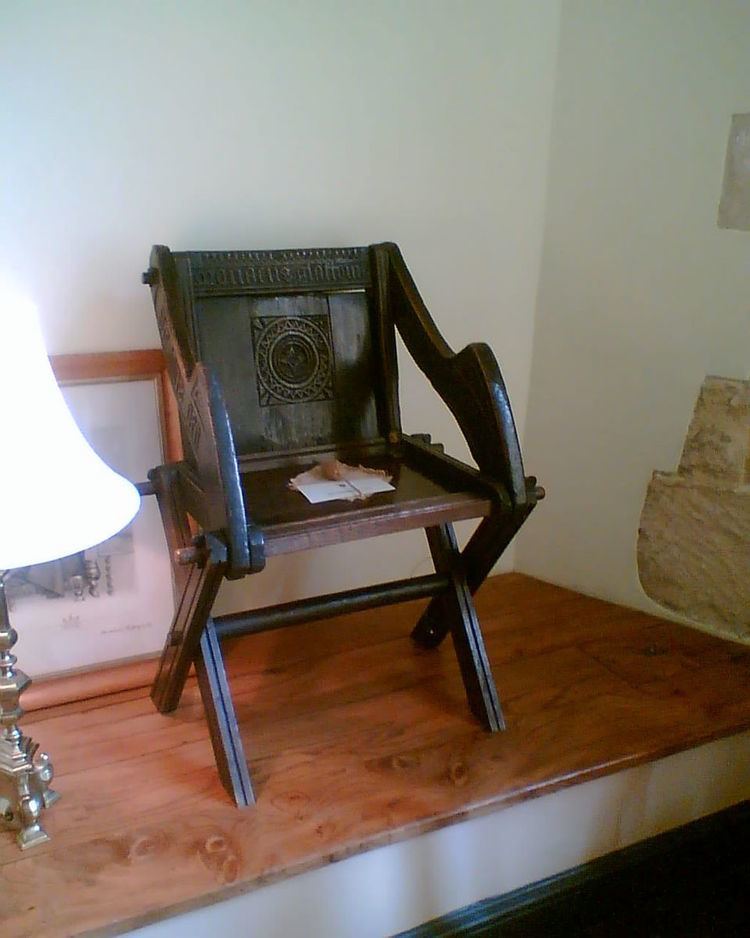 | ||
Glastonbury chair is a nineteenth-century term for an earlier wooden chair, usually of oak, possibly based on a chair made for Richard Whiting, the last Abbot of Glastonbury, England. The Glastonbury chair was known to exist since the Early Middle Ages, but seems to have disappeared from use in part of the Later Middle Ages; it re-emerged in use in Italy by the fifteenth century AD.
In England it was made originally from a description brought back from Rome in 1504 by Abbot Richard Beere to Glastonbury Abbey, and was produced for or by John Arthur Thorne, a monk who was the treasurer at the abbey. Arthur perished on Glastonbury Tor in 1539, hung, drawn and quartered alongside his master, Richard Whiting, the last Abbot of Glastonbury, during the dissolution of the monasteries. The Abbot sat on a Glastonbury chair during his trial at Bishop's Palace, Wells, where one of the two original surviving examples (illustrated) can still be seen, together with other chairs of this age and later reproductions.
The second chair remained in St John's Church in Glastonbury until it found its way by an unknown route into the collection of Horace Walpole's Gothic pile Strawberry Hill in Twickenham, Middlesex. When the contents were sold in 1842, the then vicar of Glastonbury, the Reverend Lionel Lewis, made an impassioned speech telling the bidders the chair belonged in Glastonbury. Nobody bidding against him, Lewis took the chair back to Glastonbury where it is extant in St John's Church.
Gordon Browning was the last maker of the Glastonbury chair. A consummate worker in wood, he delighted in telling the story of the history of the chair he exported around the world. Browning had lived in Glastonbury for 80 years by the time of his death, with a brief absence during the Second World War, when he was employed making aircraft frames in Bristol. His son Clive said, "When my father was asked if he had lived all his life in Glastonbury, he loved to say - not yet."
The Glastonbury chair design has become popular with reenactors, owing to its simple construction, wide availability of plans, and the opportunity for extensive decorative carving. As a result, there are likely more chairs of this pattern in existence now than there ever were in period.
The chair does not fold. Although it is frequently assumed to do so, especially when made with circular tenons, triangular frames remain rigid even if they are joined by bearings. If the tenons are tusked then the chair may be quickly dismantled for shipping. Chairs for re-enactment are usually made in this way, but there is no evidence in period that they were regarded as being especially portable.
